Why Light Is White and Rainbows Are Colorful
Many cultures all over the world have legends about rainbows, in which their appearance is often associated with otherworldly forces. And even though a rainbow has nothing to do with magic, not everyone knows where it comes from and why it’s colored this way.
5-Minute Crafts would like to tell you about how white light and water droplets create a multi-colored rainbow.
If sunlight is white or colorful
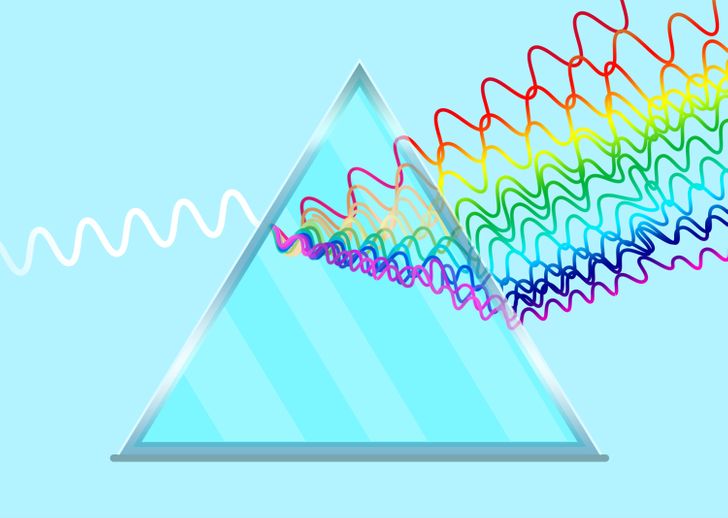
In 1666, Isaac Newton noticed that waves of sunlight entering through his window and hitting a prism split into 7 different colors. This phenomenon helped him realize that, in fact, light is a combination of different colors.
Indeed, sunlight is a mixture of electromagnetic waves of different colors, each of which has its own length and its own propagation speed. Falling onto a prism, a ray of light refracts and slows down (after all, inside a prism it can’t move as easily as in empty space). And when it exits the prism, it refracts again, changing its direction.
Besides, the prism divides white light into several components. One part of it moves slowly and refracts more than the other. The other part moves faster and refracts slightly. Thus, waves of red light travel at high speeds and are the least bent. Orange waves move a little slower and refract a little more. The slowest waves are violet light, and they’re refracted the most.
How a rainbow is formed
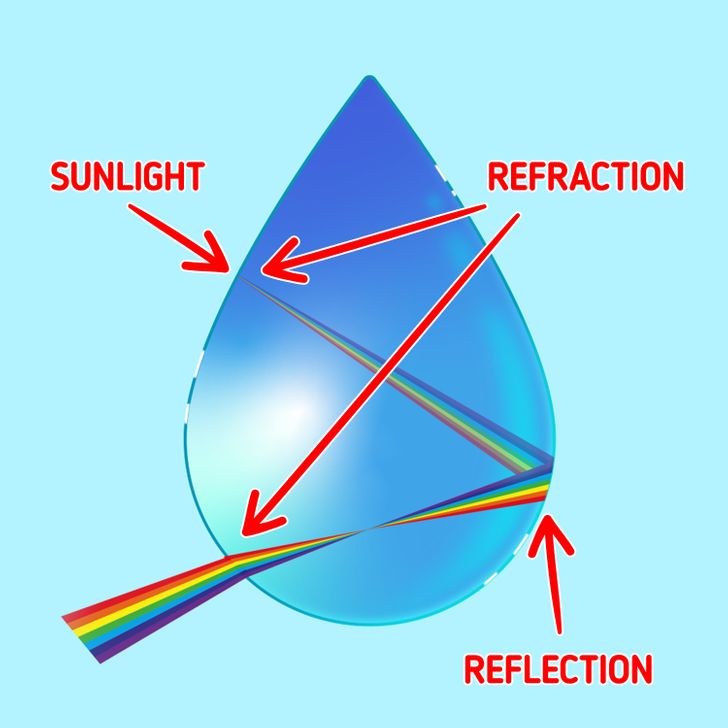
Just like a ray of white light splits into rays of different colors inside a prism, it also splits inside the smallest droplets of water that accumulate in the atmosphere after rain. Light waves pass through the droplets, refracting and reflecting from their inner walls. The reflected light is directed to the opposite side of the droplet, refracting again and splitting into rays of different colors, which are called the spectrum. When bent light waves reach the opposite wall of a droplet, they don’t fully pass through the water but are reflected again. The transformed ray of white light at the exit from the droplet is perceived by the human eye as rays of different colors.
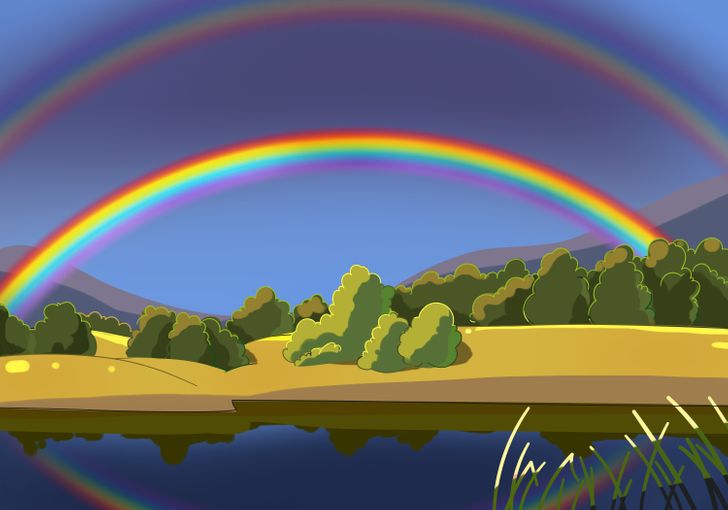
The colors in a rainbow are always arranged according to their wavelengths. The red light, which has the longest wavelength, bends at an angle of 42° and is located on the outermost side of a rainbow. Violet light, which has the shortest wavelength, usually bends at 40° and is on the inside of the rainbow.
When a double rainbow appears
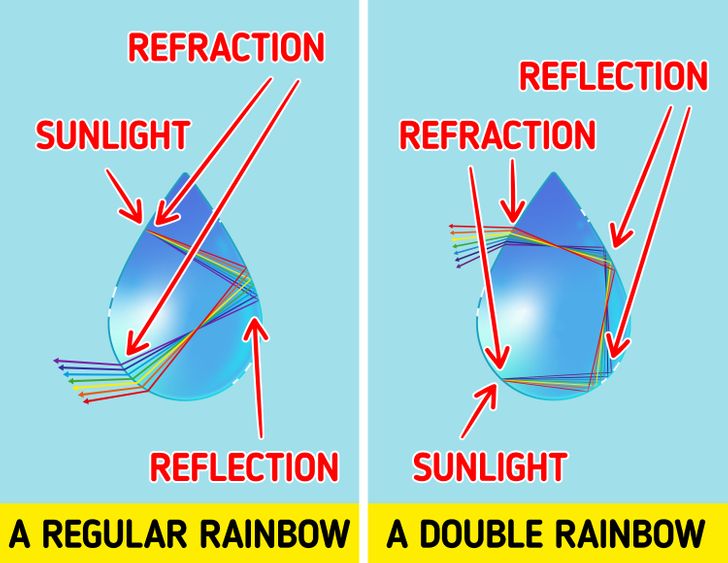
A rainbow with a red stripe at the top and a violet one at the bottom is the most common. When it’s formed, sunlight goes through the stages of refraction, reflection, and refraction. But when light is refracted and reflected inside a droplet several times, acting on the principle of refraction — reflection — reflection — refraction, 2 rainbows appear in the sky simultaneously.
A secondary rainbow forms above the primary rainbow, and it’s usually dimmer. Due to the fact that light in it is reflected twice, such a rainbow is inverted, and the colors in it are arranged in the reverse order.
Since a primary rainbow refracts sunlight inward and a secondary rainbow, outward, the areas of the sky below the primary rainbow and above the secondary one are lighter. And the area between the 2 rainbows is darker, usually much darker than the surrounding sky. This area between the 2 rainbows is called Alexander’s Band, named after the Greek philosopher, Alexander of Aphrodisias, who first described this phenomenon.
Bonus: Are there more colors in a rainbow that we can’t see?
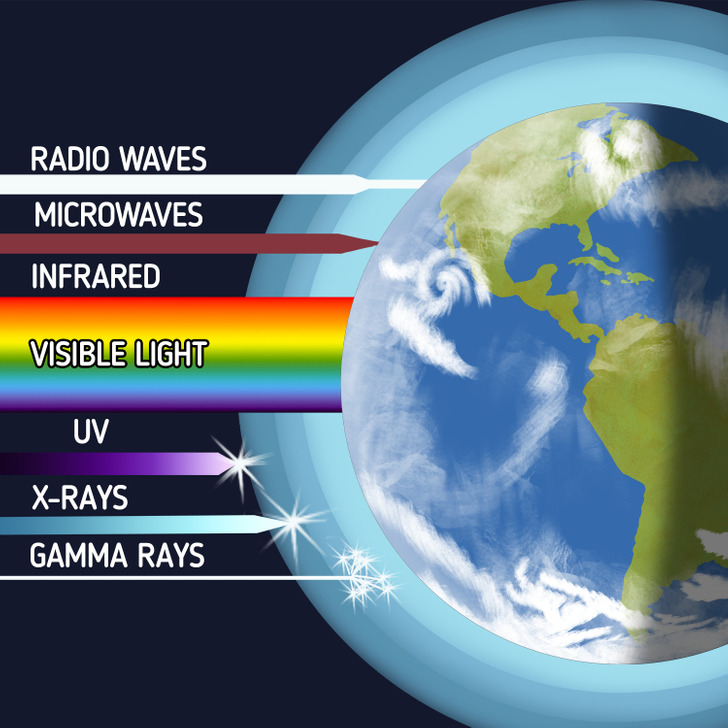
The electromagnetic spectrum is the name given to the collection of all electromagnetic radiation in the universe. Depending on the frequency, there are different electromagnetic waves: radio waves, microwaves, infrared, visible light, ultraviolet, X-rays, and gamma rays.
Each type has specific characteristics that influence how it penetrates into the Earth’s atmosphere. The visible light is not blocked by the atmosphere of Earth and our eyes respond to it — this is why we see so many beautiful colors in the rainbow.
But it looks like we don’t see all of them. For example, if we could recognize infrared, we would see that it is located beyond the red side of the rainbow, while ultraviolet would appear at the violet end.